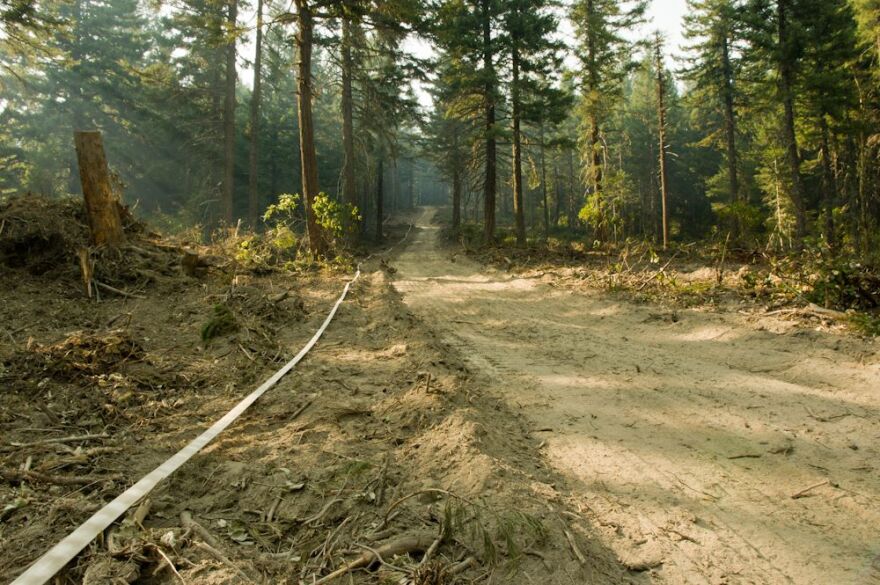UPDATE THURSDAY, AUGUST 20, 5 PM: The number of firefighters dipped under a thousand at the Stouts Creek Fire , a further sign that the fire is nearing containment, and that there are more urgent fires elsewhere.
Nobody should take the changes as a signal to relax. "We’re still sitting on a lot of fuel out there,” said John Pellissier, Operations Section Chief for the Oregon Department of Forestry.
Another quarter-mile or so of containment line remains to be constructed, and fire managers plan further burnout out operations to rob the fire of potential fuel.
Thursday's weather featured lower temperatures and higher humidity, better weather for burnouts. Evacuation advisories remain unchanged.
By the numbers, as of this morning: 25,806 acres (roughly 40 square miles), 76% contained. Firefighters number 920.
UPDATE WEDNESDAY, AUGUST 19, 5 PM: The Stouts Creek Fire is approaching a milestone, with the fire about 75% contained as of this morning.

John Pellisier, Operation Section Chief for the Oregon Department of Forestry, said "we are getting close to connecting the fire lines at the south end of the fire.”
That move would completely encircle the fire, though more work is needed to widen containment lines.
By the numbers, as of this morning: 25,324 acres (roughly 40 square miles), 74% contained. Firefighters number 1,045, about 400 fewer than over the weekend of August 15-16. With the many fires burning across the west, crews are sent packing to more urgent fires, leaving only the staff needed to finish the job.
*************************
UPDATE TUESDAY, AUGUST 18, 5 PM: Hot and dry weather forced a change in firefighting strategy at the Stouts Creek Fire on Tuesday (Aug. 18).

Temperatures into the 80s and 90s and humidity in the mid-teens would not allow "burnout" operations during the day.
Concerns about the possibility of rapid fire growth led fire managers to increase the evacuation notice along Upper Cow Creek Road to level 2, "get set" on a "ready, set, go" continuum.
The hot weather was expected to remain in the fire area through Wednesday afternoon, at which point the wind is expected to shift to the north.
MONDAY, AUGUST 17, 3 PM: The Stouts Creek Fire continues to burn through timber in southern Douglas County, near the Jackson County Line.

But as fire lines expand, crews are being released to fight other fires. By a Monday morning update (Aug. 17th), personnel for the fire was listed as 1,144, about 300 fewer than a few days before.
The remaining crews are using "burnout" techniques to widen fire lines, deliberately burning forest fuel to deny the fire the chance to grow on its own.
Monday morning, fire managers pegged the fire's size at 24,756 acres (nearly 39 square miles).

The fire started on July 30th; unlike many other fires that started around the same time, lightning was not a factor. The Douglas Forest Protective Association says a man mowing grass caused the Stouts Creek burn.
And since the mowing took place during hours prohibited, the man can be billed for firefighting costs. As of Monday morning (Aug. 17th), those costs stood at $29.5 Million.




